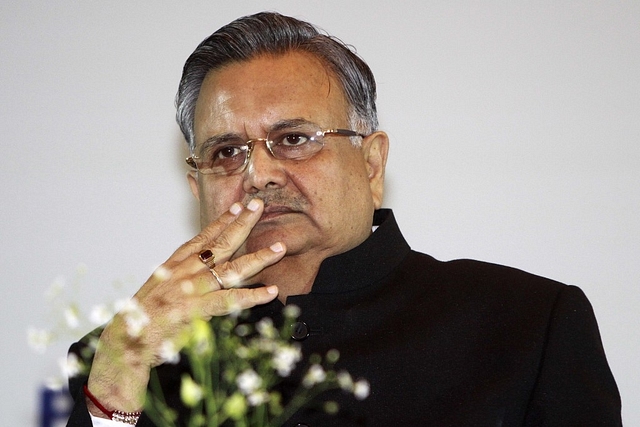
Chhattisgarh Assembly Polls: Local Level Anti-Incumbency Will Determine The Outcome
As the ruling BJP and opposition Congress gear up for the polls in the state, here are the key factors that would influence the election results.
Chhattisgarh elections space is heating up. Dr Raman Singh’s first leg of Vikas Yatra covering 55 constituencies is over and the second leg can start anytime now, after being rechristened as Atal Vikas Yatra. Congress president Rahul Gandhi has already sounded the poll bugle in the state while inaugurating the new party office, earlier this month, where he said that the people of the state have made up their mind to dislodge the Bharatiya Janata Party (BJP) government. Mayawati is exploring options of forming an alliance with Congress at the same time keeping channels open with Ajit Jogi.
Results show continuity
The results of the last three polls since the formation of the state depict continuity. BJP’s seat tally has been constant at 49-50 and Congress at 37-39. While vote share gap between the two main parties has witnessed a reduction from 2.6 per cent in 2003 to 0.7 per cent in 2013, the seat tally indicates a level of stability in the results.
However, significant churning takes place
Although overall results have broadly been the same in the last three elections, a lot of seats have changed hands.
2008 Vs 2003
In 2008, after delimitation exercise 66 seats remain unchanged, while 24 new seats were created. BJP had won 35 of these 66 seats in 2003 but could retain only 19 of these in 2008 (54 per cent). Congress had won 29 of these 66 seats but could retain only 12 (41 per cent). On an overall basis 53 per cent seats changed hands, where people voted out the incumbent and chose another party candidate.
2013 Vs 2008
In 2013, BJP could retain only 24 out of 50 seats won in 2008 (48 per cent), while Congress could retain only 12 out of 38 won in 2008 (32 per cent). On an overall basis approximately 60 per cent of seats changed hands. This is a big number.
Local anti-incumbency at play
This exhibits significant local anti-incumbency against Members of Legislative Assembly (MLAs) at play in each election. Normally, seat level anti-incumbency harms the party in government as it has more MLAs.
However, Congress has been unable to overthrow the BJP government because its retention ratio has been lower than the Congress, 41 per cent Vs 54 per cent in 2008 and 32 per cent Vs 48 per cent in 2013. This signifies people's anger against sitting MLAs of Congress is more than sitting MLAs of BJP. This also ties in with an IBC survey, which says that 56 per cent of people are not satisfied with their MLAs in the state.
Raman Singh’s strategy has worked
Before 2013 elections, Raman Singh knew well that local anti-incumbency has played a role in every election since 2003. He was aware that people are unhappy with some of his MLAs and that's why he appealed to the public to vote for him and not the candidate. This formula worked, and many candidates also succeed in winning while there were clear doubts about their victory. In a way, the presidential elections style adopted by Raman Singh worked for the BJP.
Urban/semi-urban/industrialised centres show tendency to vote out current MLAs
Out of the 52 seats, which changed hands in 2013, 38 seats belong to the Bilaspur, Durg and Raipur regions and 14 to the tribal regions of Bastar and Ambikapur. Bastar and Ambikapur are predominantly tribal regions of the state and account for 26 seats. Bilaspur, Durg and Raipur account for the remaining 64 seats. This implies there is a higher propensity among non-tribal areas to vote out the incumbent MLA (60 per cent seats witness change of party) compared to tribal areas (53 per cent).
Congress needs to focus on localised campaign
This leads to the conclusion that Congress should focus on a localised campaign, prepare a manifesto for all 90 seats, create a 'charge-sheet' document against all sitting MLAs of BJP, if it wants to win the elections. If it attempts a presidential style contest, it is bound to lose as it doesn’t have any leader to match Raman Singh’s charisma in the state. Even a Raman Singh Vs Rahul Gandhi contest won’t help Congress. It needs to exploit the local level anti-incumbency.